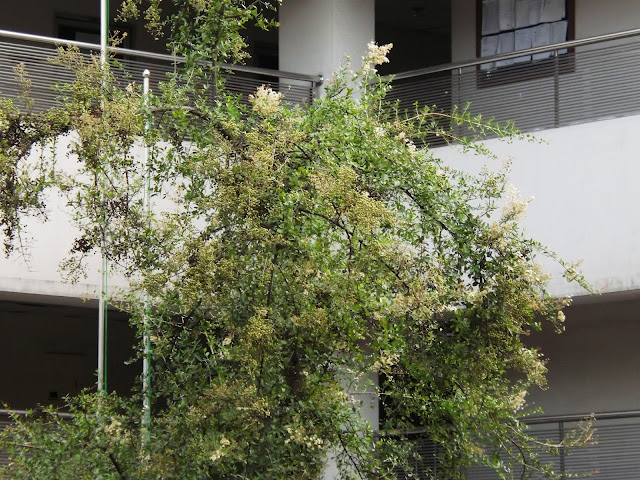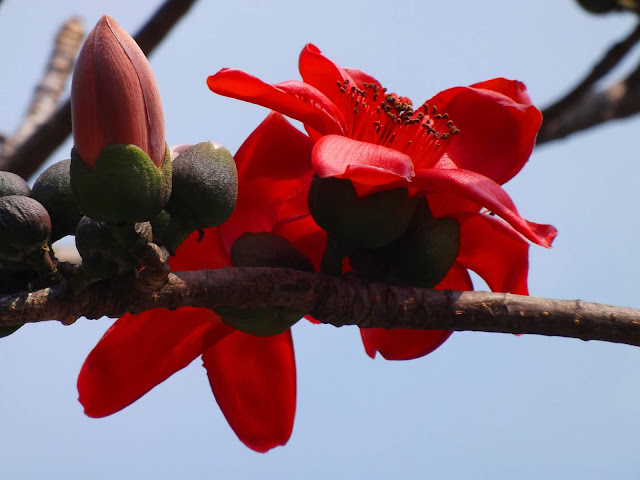Mehedi or Henna, Lawsonia inermi
Mehedi or Henna (Lawsonia inermi, family: Lythraceae) is an evergreen bushy shrub or small tree with profuse branches, attaining a height of 2-8 m. It is a very common homestead plant in Bangladesh. The historical plant is native to differnt parts of Asia, Africa and Australasia.
Common names: Henna, Hina, Mignonette tree, Egyptian privet.
It is used in jaundice, leucorrhoea, shoulder pain, burning sensation in body, dandruff and insomnia.
Leaves are elliptical, lanceolate, acuminate at the top and are sub-sessiled; 3-5 cm long and about 1 cm wide.
Flowers are white, small, borne on terminal inflorescence. Petals 6. Flowers bloom from late summer to autumn.
Fruits are small, granular, deep purple or black-colored when ripe. Seeds are numerous, smooth, pyramidal.
In Indian subcontinent including Bangladesh, many women color their palms and foot with crushed leaves in social occasions, especially in Eid-days and marriage ceremony. Many people, particularly the old men use it on beard as a religious ritual. Sometimes young men use it on their head to hide their white hair.
Propagation of the plant is caused by cutting and seed. Due to its great demand in market, it is produced commercially in Bangladesh.







13E5F6EC80
ReplyDeletekiralık hacker
hacker arıyorum
kiralık hacker
hacker arıyorum
belek
180472B06E
ReplyDeletehacker bulma
hacker bul
tütün dünyası
hacker bul
hacker kirala